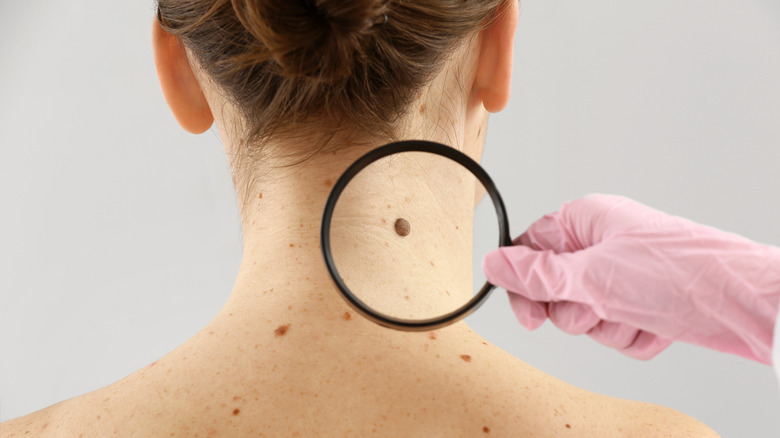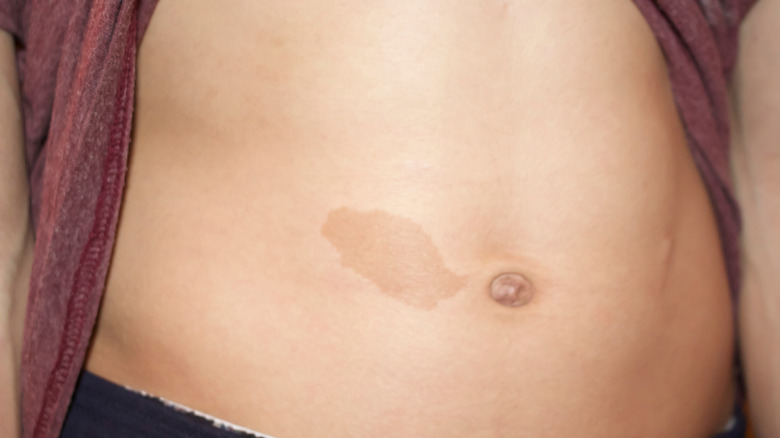The Real Difference Between A Mole And A Birthmark
Freckles, moles, birthmarks, sunspots — there's a name for every type of blemish that may appear on your skin, but is there really a difference between them? The short answer is yes, and it's important to know what's benign and what kinds of moles could be concerning.
According to the American Academy of Dermatology Association, a mole you are born with is considered a birthmark. However, not all birthmarks are moles. The term birthmark refers to a certain type of skin discoloration or lesion which is present at birth or in the time shortly thereafter (via Healthline). There are two main types of birthmarks: pigmented and vascular. Pigmented birthmarks include moles, café-au-lait spots, and Mongolian spots, while vascular birthmarks include salmon patches, hemangiomas, and port-wine stains.
Most commonly, moles are small, round, brownish spots on the skin, but they can vary greatly. Some moles are pink, black, or even skin-colored, and some lay flat while others are raised above the skin. Moles can appear anywhere on the body and are usually harmless. However, if your moles start to itch, bleed, become irregular in shape, or change from their initial presentation, it's important to consult with a dermatologist.
The different variations of birthmarks
In addition to moles, café-au-lait and Mongolian spots are also pigmented birthmarks. Café-au-lait spots are oval-shaped skin discolorations that are usually light brown on light-skinned individuals and dark brown on dark-skinned individuals (via Healthline). These spots may fade with time, but it is unlikely they will ever fully disappear. Mongolian spots can resemble bruises as they are greyish-blue, and they appear most commonly on the backs or buttocks of babies (via American Academy of Dermatology Association). Because Mongolian spots on infants can be confused with signs of physical abuse, it is critical for healthcare professionals to properly document the size and location of these marks at the time of birth.
As far as vascular birthmarks go, there is wide variability here too. These types of birthmarks occur in approximately 40% of infants and are the result of a cluster of excess blood vessels. Salmon patches, sometimes referred to as "stork bites," are reddish-pink, flat marks that occur on the face or neck. Hemangiomas may appear as red, pink, or blue flat marks which enlarge and raise within the first year of life. These, however, tend to fade in adolescence. Lastly, port-wine stains result from the coalescence of vessels under the skin and look like pink, red, or purplish marks. These marks do not fade over time.
So whether you've been bitten by a stork or spotted with a mole, keep a close eye on your skin and reach out to a dermatologist about any concerns or changes in your spots.


